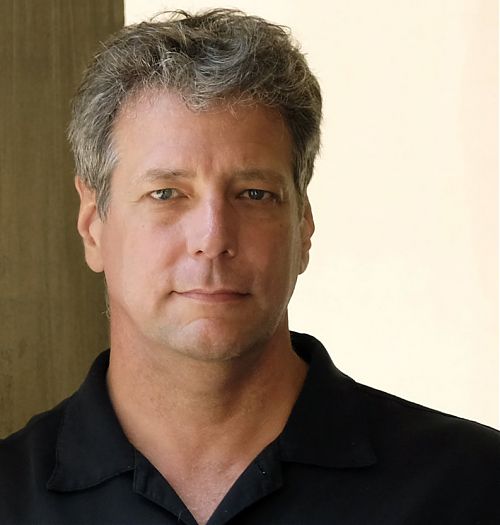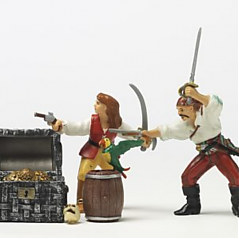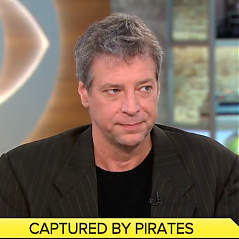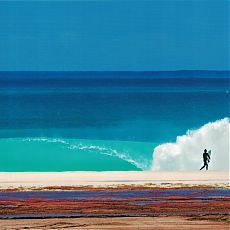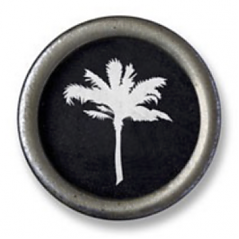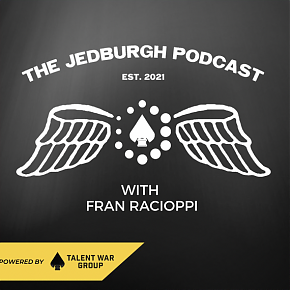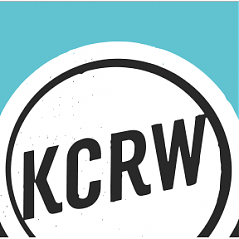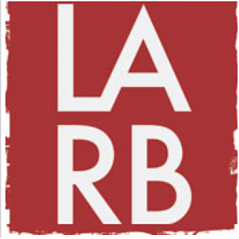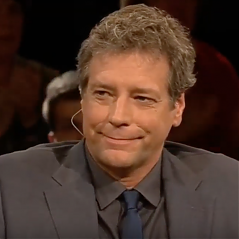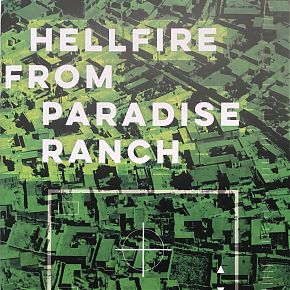Munich’s Malibu
Where to surf in Bavaria
The Atlantic Monthly — includes a slideshow
January/February 2008
Steffen Dittrich is a short, happy guy with bad teeth and thinning red hair. On the rolling wave, he looks a bit like a madman—coarse, short beard, bulging eyes—but he has grace as well as aggression. He kicks and carves, bashes the churning water, pulls a 360, slides a bit, carves, and cuts back again. He stays up for five minutes, trimming back and forth in place—longer than any surfer that day. Then he falls, and the current carries him downstream in the Eisbach, a canal that flows through Munich’s English Garden.
The Eisbach, or “Ice Creek,” a tributary of the Isar River, starts where two underground canals in Munich meet and emerge under the 19th-century Prinzregentenstrasse bridge, next to the city’s modern-art museum. In the 1970s, civic engineers laid three rows of concrete blocks along the canal bottom to weaken the flow of water surging up from underground. The shape of the bottom— along with wooden boards wedged into the canal by local surfers—creates a fast but surfable standing wave that has become the most popular “river-surfing” spot in Europe.

“German surfing” might sound about as plausible as “Nebraskan seafood,” but the sport has been thriving here for years. The first native to surf a German swell is said to have been Uwe Drath, a lifeguard on Sylt, in about 1954. Sylt has been a chic island resort since the turn of the century—a kind of North Sea Martha’s Vineyard—but in the postwar years it was still relatively undeveloped; the island’s first “surf club,” founded in the 1960s, held meetings in a converted cattle stall. Good waves break on Sylt only in the autumn, though; during high summer, the sea is generally flat. So the discovery of a year-round wave in Munich has created an enclave of borrowed California culture in the heart of Bavaria. Another canal in the city has a rideable wave as well, and is home to an annual competition that draws surfers from across the country, if not the world.
I grew up in California but live in Berlin, so it was partly homesickness, partly curiosity, that brought me to Munich for the Surf Open last July. Before the contest, I had a look at the Eisbach wave, which is faster, more dangerous, and more famous than its rival across town. I rented a comfortable but uncool Dutch-style bike and pedaled with my board to the English Garden. The river boiled up from under two stone bridge arches, and spectators lined the bridge and the banks of the canal. Willows and chestnuts hung over the water. From the bank, I could hear the thrilling rush of white water and catch whiffs of neoprene wet suits and surf wax—smells that would have reminded me of home if they hadn’t been mixed, incongruously, with cool riverine air instead of salt.
The Eisbach is about 50 feet wide, too narrow for more than one person at a time to ride the rough, waist-high wave. Surfers wait their turn in lines along each bank. In the water, they face the bridge and surf in place on the curl of the wave. It isn’t easy. When my turn came, I positioned my board on the churning crest with my feet and pushed off. But I wasn’t used to the perpetual-motion wave. Instead of building speed and running forward along a swell of moving water, as in the ocean—where I would have all the wave’s energy at my back—I had to balance and steer into a powerful oncoming current. The idea was not to move forward but to resist going backward, ideally while performing lots of fancy tricks. I was like a bird in a wind tunnel. I fell several times, nearly cracking my head on the underwater concrete and floating down to a meadow where sunbathing women giggled each time I climbed out with my board.
The first surfers in Munich started cautiously, using ropes tied to bridges or trees to help them keep their balance. This was in the 1970s, and river surfing was illegal and could bring heavy fines. Dittrich spent the summer of 1983 in the English Garden as a student surf bum, living in his VW bus. Whenever the cops came, he says, “I just let go of my rope and floated away. The canal down there splits three ways, so it was hard for them to find you.”
Surfing in the canals is still technically against the law. Many surfers have suffered dislocated shoulders or broken bones from hitting the concrete blocks. Still, the number of outlaw surfers in Munich swelled throughout the 1980s and 1990s—there are now 300 or 400—and the police eventually gave up. They even tolerate the annual competition, which began in 2001.
The Munich Surf Open is held at the Flosslände—a pair of canals beside the Isar, some five miles south of the Eisbach wave. I pedaled there on my bike too, following the wide basin of the river, which bends through the city between high, fortresslike stone banks. Munich sprang up around the Isar during the Middle Ages, when the local fords and bridges made the area an important center of commerce. The current bridges are immodest structures encrusted with statues and named after Bavarian electors and princes: Luitpoldbrücke, Maximiliansbrücke, Ludwigsbrücke. People stared as I rode past the bridges on my clunky bike, with my surfboard under one arm.
The Flosslände wave forms under an arching modern bridge at the bottleneck of a broad canal. The water flows languidly between lush trees until it reaches a narrow, sloping race of concrete under the bridge, and then it rears up—because of a sudden change in the shape of the concrete, and more jammed-in wooden boards—into a roughly two-foot-high curl. City authorities use sluices here to regulate the volume of water to a power station downstream, and the size and speed of the wave change with the strength of the flow.
On the day of the contest last summer, the wave was large—about three feet high—and fairly fast. I got there in the morning, before the competition, when non-contestants could take turns in the water. The wave wasn’t as rough as the Eisbach’s, and it was easier to surf; I kept my balance for a couple of minutes. But it was strange: the smooth, glassy, insistent green current flowed under my board like a treadmill.
Flosslände means “raft landing,” and the Bavarians used to float cargo down the canals on log rafts. These days replicas of the rafts—operated by tourist companies and carrying bratwurst grills, beer kegs, and oompah bands—drift down the canals. Every so often one plunged through the wave like a lumbering version of the log ride at Disneyland. The surfers made way, reluctantly.
The contest started under a high, hot sun. People sunbathed on towels or barbecued in a nearby meadow. Several hundred spectators—shirtless men in sunglasses, women in bikinis—looked on as the competitors, some 50 in all, took turns trying to impress a panel of judges. Points were awarded for tricks—360s, off-the-lips, little hopping aerials—as well as style. A Humvee next to the judges’ tent blasted music (reggae, the Red Hot Chili Peppers), and a TV broadcaster from Eurosport kept up a running commentary. Banners for the sporting companies Quiksilver and Völkl festooned the banks.
Europe has always had a love-hate relationship with America, and the paradox of the surf scene here is that it’s a grassroots movement of the Volk, against German officialdom, to make room for something decidedly un-German— a Polynesian sport in an American pop-culture mode. This doesn’t mean the surfers want to be American. One German surfer told me the Flosslände crowds were fine during the contest, but obnoxious during Oktoberfest, when their numbers swell with foreigners. “All these Americans and Australians stay in the campground over there,” she said, pointing beyond the bridge. “Then they see the wave and want to try it out.”
Still, for a few hours the scene looked to me like a bunch of Germans trying to pretend they were in Hawaii or California; except for the landlocked heat and the freshwater smells, the Munich Surf Open seemed no different from a small-surf competition in Malibu or Huntington Beach. But then a massive raft loaded with drunken Germans and a band playing “Volare” on French horns and accordions came splashing through the wave. Minutes later I found a young surfer on the bank with a soaked beer pretzel in one hand and a sodden hunk of schnitzel in the other.
“The good thing is that you can always get something to eat from the rafts,” he said.
I blinked. “Did you really swim out there and cop that schnitzel?”
“Of course,” he said, shrugging. And it was hard to deny that the Bavarians were onto something new.
Michael Scott Moore
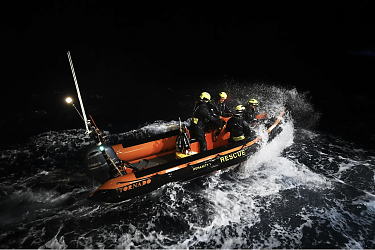
Rafts of the Medusa
Why every day on the Mediterranean is a new scandal for Europe. For both Foreign Policy and Die Zeit.
California’s Attempt at Land Reparations
How land seized from a Black family 100 years ago may be returned. The Bruce’s Beach story from a hometown angle, for The New Yorker
Day of the Oprichnik, 16 Years Later
The novelist Sorokin, the president Putin, his man Dugin, and the war in Ukraine. For n + 1.
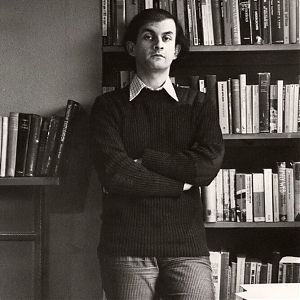
The Rushdie Narrative
Knife and the crumbling ground beneath free speech
There Must Be Some Way Out of Here
An essay on Bob Dylan, “All Along the Watchtower,” and Somali pirate captivity.
That Mystic Shit
The life of Lou Reed in two biographies

Cambodian Seafarers Talk About Pirates
Mike visits Cambodia for The New Yorker to talk about a harrowing shared experience in Somalia
The Muslim Burial
Cambodian hostages remember digging a grave for one of their own. A sequel chapter to The Desert and the Sea
The Real Pirates of the Caribbean
Adventure journalism in Southern California. A travel essay for The Paris Review.

Antifa Dust
An essay on anti-fascism in Europe and the U.S., for the Los Angeles Review of Books
Was Hitler a Man of the Left?
A book that helped Republicans in America lose their damn minds.
Ghosts of Dresden
The Allied firebombing of Dresden in 1945 destroyed the baroque center of what Pfc. Kurt Vonnegut called, in a letter home from Germany, “possibly the world’s most beautiful city.”
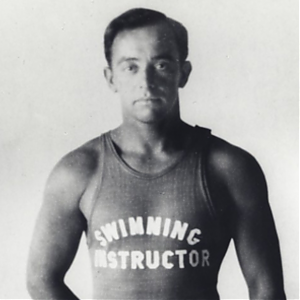
George Freeth, Biographed
The first academic treatment of America’s surf pioneer. Also, was Freeth gay?
It’s Called Soccer
Americans live on what amounts to an enormous island, defended on two shores by the sea, and we’ve evolved a few marsupial traditions that nobody else understands.
Tilting at Turbines (in the Severn River)
The morning was clear and cold, with frost on the church steeple and the cemetery grass. I had a quick English breakfast at a white-cloth table, in my wetsuit, and drove to Newnham, a village on the Severn River in Gloucestershire, parking near the White Hart Inn.

The Curse of El Rojo
I’d packed the car lightly — a bag of clothes, a bag of cassette tapes, a backpack of books, a few essential tools.









